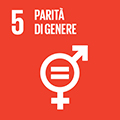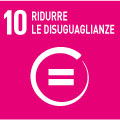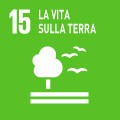- Docente: Giulia Marsili
- Crediti formativi: 6
- SSD: L-ANT/08
- Lingua di insegnamento: Inglese
- Modalità didattica: Convenzionale - Lezioni in presenza
- Campus: Bologna
- Corso: Laurea Magistrale in Archeologia e culture del mondo antico (cod. 8855)
-
dal 11/11/2024 al 18/12/2024
Conoscenze e abilità da conseguire
By the end of the course students will have verified the procedures used in archaeological research, ranging over the entire process from discovery to publication; they will be au fait with the state of knowledge on field work, on responsible technical and scientific productions and on designing international research. The skills acquired will equip them to tackle the requirements of research, conservation and protection of the archaeological heritage within their own competences.
Contenuti
This course examines archaeological research on the human body and dress in ancient civilizations, in terms of clothing, ornamentation, and body modification. The course considers different approaches and sources to define the topic and explores the way and extent to which these matters contribute to our understanding of ancient societies. By integrating textual sources, iconographic documents, and archaeological evidence, the course aims to delve into dress as a dynamic index in the construction of identity and instrumental in mediating social, political, and ritual relationships within the cultural environment. Through the study of various case studies across the Mediterranean, students will acquire theoretical and practical knowledge of the discipline and will be able to critically engage with the current debate in relation to wider social processes.
Introduction and methodological issues
- Archaeology of the body, clothing and ornamentation: conceptual definitions, approaches and sources
- Embodiment theories between anthropology and archaeology: from theorizing perception to understanding experience
Treating bodies in life and afterlife
- Embodying daily routine practices: cleanliness and beautification in antiquity
- Inscribing bodies: tattooing as identity body markers across millennia
- Body conception facing death: funerary rituals in the Roman and Late Roman empire
From body ornaments to ornamented bodies: dress and the construction of identity in antiquity
- Clothing and ornamentation in the Roman and Late Roman empire
- Technological advancements and trade in clothing and ornamentation
Symbolism and Social Significance. Clothing and ornaments as status, gender, and identity markers
- Empowered bodies: ornaments and attire as expression of status and power
- Gender perspectives: dress, cross-dressing and womanhood
- Holy men and holy dresses: sanctity and textiles in Late Antiquity and early Middle Ages
Conclusive remarks and class debate
- Group A: personal presentations and class discussion of assigned lectures
- Group B: personal presentations and class discussion of assigned lectures
- Group C: personal presentations and class discussion of assigned lectures.
Testi/Bibliografia
Attending students:
Students attending classes will be asked to select and analyzed some articles and/or book chapters that will be presented during the course and will be available on the Online Teaching platform. The selected readings will be collectively discussed on the last week of the course.
Recommended readings for students attending classes are the following:
Ciffarelli M. (2019), Introduction, in Fashioned Selves, Dress and Identity in Antiquity, Oxford, 1-10.
Della Casa P. (2013), Matters of Identity: Body, Dress and Markers in Social Context, in Tattoos and Body Modifications in Antiquity, Proceedings of the sessions at the EAA annual meetings in The Hague and Oslo, 2010/11, Zurich Studies in Archaeology, 9, 9-14.
Eicher J. B., Roach-Higgins M. E. (1992), Definition and classification of dress: implications for analysis of gender roles, in Barnes, Ruth & Eicher, Joanne B. (Eds.) Dress and gender: Making and meaning, New York:Berg Publishers, Inc., pp.8-28. https://hdl.handle.net/11299/170746 .
Harlow M. (2004), Female Dress, Third – Sixth century: the messages in the Media?, in Antiquité Tardive, 203-215.
Joyce R.A. (2005), Archaeology of the Body, in The Annual Review of Anthropology 34, 139–158.
Graham E.-J., Corporeal concerns: the role of the body in the transformation of Roman mortuary practices In: Devlin, Zoë L. and Graham, Emma-Jayne eds. Death Embodied: Archaeological Approaches to the Treatment of the Corpse. Studies in Funerary Archaeology (9). Oxford: Oxbow, pp. 41–62.
Parani M. (2007), Defining personal space: dress and accessories in Late Antiquity, in Objects in Context, Objects in Use. Material Spatiality in Late Antiquity. (Late Antique Archaeology 5 - 2007), ed. L. Lavan, E. Swift and T. Putzeys (Leiden and Boston), 497-529.
Non-attending students:
Non-attending students are required to prepare two among the following manuals and four among the following readings:
Manuals:
Cleland L., Harlow M., Llewellyn-Jones L. (2005), The clothed body in the ancient world, Oxford.
Harlow M., Nosch M.-L. (2014), Greek and Roman Textiles and Dress. An Interdisciplinary Anthology, Oxford.
Lee M. (2015), Body, Dress and Identity in Ancient Greece. Cambridge and New York, Cambridge University Press https://doi.org/10.1017/CBO9781107295261
Morgan F. P. (2018), Dress and personal appearance in Late Antiquity. The clothing of middle and lower classes, Leiden-Boston.
Readings:
Ciffarelli M. (2019), Introduction, in Fashioned Selves, Dress and Identity in Antiquity, Oxford, 1-10.
Della Casa P. (2013), Matters of Identity: Body, Dress and Markers in Social Context, in Tattoos and Body Modifications in Antiquity, Proceedings of the sessions at the EAA annual meetings in The Hague and Oslo, 2010/11, Zurich Studies in Archaeology, 9, 9-14.
Della Casa P., Witt C. (2013), Aspects of Embodiment – Tattoos and Body Modifications in Antiquity, in Tattoos and Body Modifications in Antiquity, Proceedings of the sessions at the EAA annual meetings in The Hague and Oslo, 2010/11, Zurich Studies in Archaeology, 9, 5-8.
Eicher J. B., Roach-Higgins M. E. (1992), Definition and classification of dress: implications for analysis of gender roles, in Barnes, Ruth & Eicher, Joanne B. (Eds.) Dress and gender: Making and meaning, New York:Berg Publishers, Inc., pp.8-28. https://hdl.handle.net/11299/170746 .
fusillo E. (2022), Tracing Stigma: The Evolution of the Tattoo in the Middle Ages, University of Dayton.
Harlow M. (2004), Female Dress, Third – Sixth century: the messages in the Media?, in Antiquité Tardive, 203-215.
Harlow M., Nosch M.-L. (2014), Weaving the Threads: methodologies in textile and dress research for the Greek and Roman world – the state of the art and the case for cross-disciplinarity, in Greek and Roman Textiles and Dress an Interdisciplinary Anthology, Oxford, 1-33.
Hawken K. (2022), Tattooing in Antiquity, Symbolism, and Practice in Early Cultures, in Anthropology Department Scholars Week. 6. https://cedar.wwu.edu/anthropology_scholarsweek/6
Jones C. P. 1987, Stigma: Tattooing and Branding in Graeco-Roman Antiquity, in The Journal of Roman Studies, 77, 139-155.
Joyce R.A. (2005), Archaeology of the Body, in The Annual Review of Anthropology 34, 139–158.
Larsson Lovén L. (2014), Roman Art: what can it tell us about dress and textiles? A discussion on the use of visual evidence as sources for textile research, in Harlow M., Nosch M.-L. (2014), Greek and Roman Textiles and Dress. An Interdisciplinary Anthology, Oxford, 260-278.
Lee M.M. (2012), Dress and Adornment in Archaic and Classical Greece, in A companion to women in the ancient world, ed. S. L. James, S. Dillon, Wiley-Blackwell.
Llewellyn-Jones L. (2021), Body and Clothing, in A Cultural History of Color in Antiquity, 81-102.
Muthesius A. (2016), Cloth, colour, symbolism and meaning in Byzantium (4th-15th centuries), in Δελτίον της Χριστιανικής Αρχαιολογικής Εταιρείας, 37, 181–198. https://doi.org/10.12681/dchae.10695
Benda-Weber I. (2018), Early Greek garments: indications for Weaving techniques and textile ornaments on representations and evidence of contemporary textile remains, PURPUREAE VESTES VI Textiles and Dyes in the Mediterranean Economy and Society (M.S. Busana, M. Gleba, F. Meo, A.R. Tricomi eds.), 49-59.
Parani M. (2007), Defining personal space: dress and accessories in Late Antiquity, in Objects in Context, Objects in Use. Material Spatiality in Late Antiquity. (Late Antique Archaeology 5 - 2007), ed. L. Lavan, E. Swift and T. Putzeys (Leiden and Boston), 497-529.
Roach-Higgins M. E., Eicher J. (1992), Dress and Identity, in Clothing and Textiles Research Journal 10(4):1-8. https://doi.org/10.1177/0887302X9201000401
Shamir O. (2013), Dress, Hellenistic and Roman Period, in D. M. Master (ed.). The Oxford Encyclopedia of the Bible and Archaeology. Oxford, 1:328-336.
Metodi didattici
Classes will include frontal lectures and active discussion. Regular and active participation in classwork will be taken into account in the final assessment. Ppt presentations will be used in class, combined with additional digital resources such as audio-video content, documentaries, multimedia data.
During the course, specialists will be involved to talk about specific topics.
The last week of the course will be devoted to peer discussion of selected lectures, presented individually or in groups.
A field trip to a museum and/or a local archaeological context is also planned.
Modalità di verifica e valutazione dell'apprendimento
For attending students, grades will be awarded during the course through assessment of active participation in class discussions and oral presentations of selected lectures, and at the end of the course through a written text.
The written assignment (approximately 60 minutes) will consist of three open-ended questions on themes and archaeological contexts analyzed during the course.
Participation and attendance: 15%
Steering a discussion and critical thinking: 15%
Class presentation of selected paper(s): 25%
Written text: 45%
A student who attends at least 75% of the lectures is considered to be attending.
Non-attending students will take an oral examination.
The overall assessment will take the following parameters into consideration:
- an excellent knowledge of the subject matter, the ability to analyse topics, to refer to them using terminology specific to the field and to critically discuss specific issues, supporting one's own opinion, will be rewarded with an excellent mark.
- a mnemonic knowledge of the subject matter with the ability to analyse, with a correct, though not always field-specific, command of language will be rewarded with a 'fair' grade.
- a minimal knowledge of the subject matter will not be sufficient to pass the examination.
Strumenti a supporto della didattica
PDFs of ppt presentations, additional readings and other support materials will be available on the Online Teaching platform (https://virtuale.unibo.it/).
Students who require specific services and adaptations to teaching activities due to a disability or specific learning disorders (SLD), must first contact the appropriate office: https://site.unibo.it/studenti-con-disabilita-e-dsa/en/for-students.
Orario di ricevimento
Consulta il sito web di Giulia Marsili
SDGs




L'insegnamento contribuisce al perseguimento degli Obiettivi di Sviluppo Sostenibile dell'Agenda 2030 dell'ONU.
